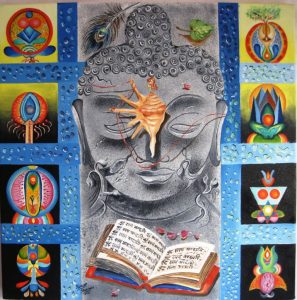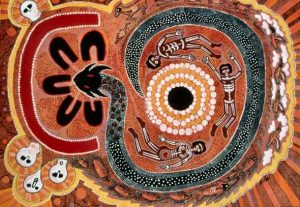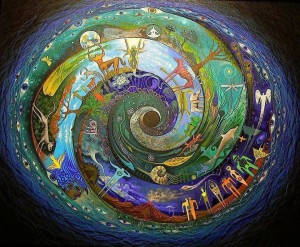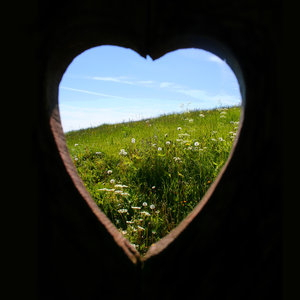 We use the breath as the foundation of meditation practice. One of the functions of the breath is to becalm the mind and to sense yourself: a living being . . . with six sense doors: sight, smell, hearing, taste, touch and in the Eastern contemplative tradition thought, a sense door that perceives what goes on in our minds. What does it mean to simply sense?
We use the breath as the foundation of meditation practice. One of the functions of the breath is to becalm the mind and to sense yourself: a living being . . . with six sense doors: sight, smell, hearing, taste, touch and in the Eastern contemplative tradition thought, a sense door that perceives what goes on in our minds. What does it mean to simply sense?
In meditation we let things simply appear through whatever sense door they appear in. We let them be there. Notice them when they’re there and when they go away, let them go. The emphasis is on being at ease. You’re not trying to accomplish anything; you’re not trying to force your meditation to become anything, just staying at ease and allowing things to occur naturally.
All kinds of sensory experience arise. There may be a sound outside. Let the sound come to you; you don’t have to go to it. An itch will occur; let the itch arise. You don’t have to do anything about it, just let it be there, be present for it. A thought arises, just be aware of the thought. You may experience restlessness . . . an eagerness to accomplish or fix something. You may try to block out what you are perceiving. The idea is to stay present. If sensation arises, be really present for it, take it in, allow it to be there, offer your presence to it. When it goes away, let it go away.
 In the mindfulness tradition, this is called choiceless awareness. You don’t choose what arises, you don’t choose what you pay attention to, once you’re here and present you allow, choicelessly, whatever arises to be there. You’re not in conflict with anything. You’re not trying to manipulate anything or hold on to anything; just letting things be. In that radical letting-things-be, you let yourself be. Many people don’t have much experience with letting themselves just be. We’re always trying to fix or improve ourselves, to defend or protect ourselves. Let it be. Then the meditation practice unfolds and deepens with that sense of beingness.
In the mindfulness tradition, this is called choiceless awareness. You don’t choose what arises, you don’t choose what you pay attention to, once you’re here and present you allow, choicelessly, whatever arises to be there. You’re not in conflict with anything. You’re not trying to manipulate anything or hold on to anything; just letting things be. In that radical letting-things-be, you let yourself be. Many people don’t have much experience with letting themselves just be. We’re always trying to fix or improve ourselves, to defend or protect ourselves. Let it be. Then the meditation practice unfolds and deepens with that sense of beingness.
Over time, you may find life unfolds with less stress and more freedom. Insight arises when we start being present for our life in a careful way. We develop more concentration and stability in daily life with practice. Mindfulness in daily life is bout being easy, open and present to what arises without getting entangled. Rather than withdrawing we connect more fully to life. Our presence is like when we bring two hands together, relaxed palm to palm, simply making contact with living experience.
What is freedom? It is nothing more, and nothing less, than life lived awake.
~Ken McLeod, “Forget Happiness”
Every Day Life
 As we start discovering stability of mind through meditation, it becomes natural to bring a more open, relaxed mind to our daily life experiences. We are more present for our lives. There are a variety of practical ways we can do this. Each time you wash your hands . . . check in with yourself . . . pay attention be present for washing your hands. Or when the phone rings let it ring a few times . . . check in with yourself – become present. How are you feeling? When you have a better sense of who you are when you enter into the conversation, you’ll be more present.
As we start discovering stability of mind through meditation, it becomes natural to bring a more open, relaxed mind to our daily life experiences. We are more present for our lives. There are a variety of practical ways we can do this. Each time you wash your hands . . . check in with yourself . . . pay attention be present for washing your hands. Or when the phone rings let it ring a few times . . . check in with yourself – become present. How are you feeling? When you have a better sense of who you are when you enter into the conversation, you’ll be more present.
Each time you sit in your car – take a few deep breaths . . . notice what is happening – what is the state of your being as you prepare to enter the streets with others . . . Are you distracted? Are you in a hurry? Can you slow down?
Ordinary experiences present us with the choice of reclaiming our lives and taking more responsibility for how we want to live and affect others. Who says we have to rush through our lives? If we find ourselves feeling agitated and impatient waiting for the red light to change – we can consider: is this how we want to live? Maybe we can breathe deeply and relax even for a few seconds.
 We’ve already practiced mindfulness in conversation. We explored our ability to listen and considered what what underlies the urges we all have to interrupt. We can also reflect on why, how and when we say what we do. Sometimes that information can save us from making mistakes. It’s said that it takes years to make a good friend and one sentence to lose the friendship.
We’ve already practiced mindfulness in conversation. We explored our ability to listen and considered what what underlies the urges we all have to interrupt. We can also reflect on why, how and when we say what we do. Sometimes that information can save us from making mistakes. It’s said that it takes years to make a good friend and one sentence to lose the friendship.
We can look for opportunities to calm and center ourselves. Some people park a little further away from their place of work to give them selves a bit of time to practice walking meditation. You can choose different activities for different weeks to focus on practicing mindfulness in daily life. We’ve already explored the powerful practice of mindful eating. It can be as simply as having your morning coffee or tea. Housekeeping chores, cooking and gardening are examples.
Concentration
Another way to practice mindfulness is to develop stronger concentration: You focus your mind to be present in a careful way. We’ve all felt the difference between someone who is vaguely present and someone who is deeply present and connected to us. We develop concentration with regularity of practice on and off our meditation cushions. You can use these Daily Practice Suggestions and modify them according to your personal preferences.
 You can develop concentration by taking a retreat from your every day life of work and play. When you step out of the life you normally live you can get a better view. Meditating longer through the day allows your mind to settle; the concerns that we’re preoccupied with can fade away for a time. The mind comes to rest and can become luminously clear.
You can develop concentration by taking a retreat from your every day life of work and play. When you step out of the life you normally live you can get a better view. Meditating longer through the day allows your mind to settle; the concerns that we’re preoccupied with can fade away for a time. The mind comes to rest and can become luminously clear.
How have you explored quiet? Speech activates our concerns about how we relate to other people and how other people see us. We live in a web of social connections that we negotiate through communication. We communicate with others through speech. Communication also manifests through thought, books, audio/visual media and other forms of entertainment. It can be deeply restful to refrain from speaking for periods of time. We can silence our computers, phones and other devices. The deeper quiet allows us to connect more intimately with ourselves.
Seeing Life Clearly
 We couple mindfulness with concentration to see more deeply. We begin to see beyond the concepts or ideas we hold about life and other people. We see beyond the person who we initially identify as our friend’s spouse by seeing them for themselves. So much pain in our society springs from our tendency to see each other through concepts, ideas and judgments. We all have opinions about how things should be and we see things through our opinions.
We couple mindfulness with concentration to see more deeply. We begin to see beyond the concepts or ideas we hold about life and other people. We see beyond the person who we initially identify as our friend’s spouse by seeing them for themselves. So much pain in our society springs from our tendency to see each other through concepts, ideas and judgments. We all have opinions about how things should be and we see things through our opinions.
Part of the function of mindfulness is to help us see beyond our opinions and explore what is really here.
We are encouraged to free ourselves of all these concepts, comparisons, opinions and judgments: the “should” and the “should nots.” This freedom creates a higher quality of life. Our willingness to work with our minds in this way is really a loving action we make with our hearts.
